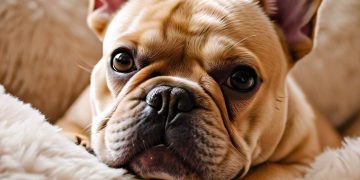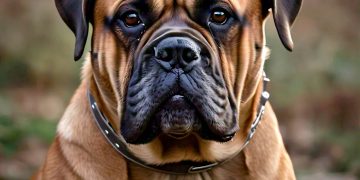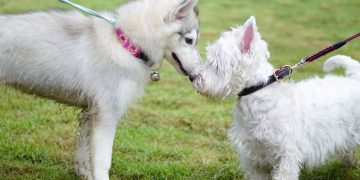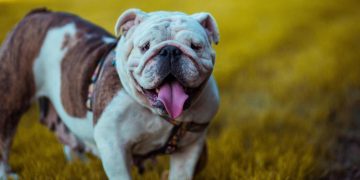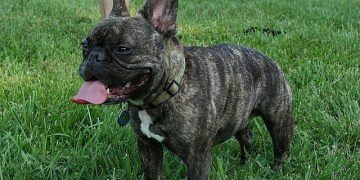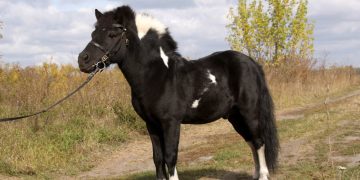The Australian Cattle Dog, also known as the “Blue Heeler” or “Queensland Heeler,” is a unique and resilient breed developed in Australia to assist cattle farmers with herding livestock across vast and rugged landscapes. This remarkable breed is renowned for its intelligence, agility, and unwavering loyalty, making it an ideal choice for active families and those looking for a working or companion dog with a high energy level. In this guide, we’ll explore everything you need to know about the Australian Cattle Dog, from its origins to essential care tips.
History and Origins of the Australian Cattle Dog
The Australian Cattle Dog has a rich and fascinating history rooted in the Australian Outback. In the early 19th century, British settlers in Australia struggled with existing herding dogs, which weren’t well-suited for the harsh Australian terrain. They needed a breed capable of handling the intense heat, covering long distances, and herding cattle effectively.
To create a more durable and resilient herding dog, ranchers crossbred the Smithfield Collie (an English herding breed) with the Australian dingo. Later, other breeds like the Dalmatian, Bull Terrier, and the Blue Merle Collie were added to strengthen the breed’s loyalty, tenacity, and herding abilities. By the late 19th century, the Australian Cattle Dog, as we know it today, was well-established and gained popularity for its adaptability, intelligence, and endurance.
Physical Characteristics of the Australian Cattle Dog
The Australian Cattle Dog is a medium-sized, muscular breed with a compact, sturdy build. They are typically:
- Weight: 35-50 pounds
- Height: 17-20 inches at the shoulder
- Lifespan: 12-15 years
Coat and Colors
The breed is known for its short, dense double coat, which provides insulation and protection against various weather conditions. Australian Cattle Dogs come in two primary color patterns:
- Blue Heeler: Characterized by a blue or blue-mottled coat with possible black, tan, or white markings.
- Red Heeler: Exhibits a red or reddish-brown speckled coat.
Their coats require minimal grooming, although they do shed seasonally.
Unique Physical Features
- Ears: Erect, medium-sized, and highly expressive, reflecting their alertness and energy.
- Eyes: Dark brown and almond-shaped, giving them an intelligent and intense look.
- Tail: Typically set low and carried slightly curved, though it may be straight when the dog is in motion.
Temperament and Personality of the Australian Cattle Dog
Australian Cattle Dogs are known for their loyal, protective, and hardworking nature. They are affectionate with their families but can be wary of strangers, which makes them excellent watchdogs. Here are some key personality traits:
- Intelligence and Trainability: These dogs are highly intelligent, ranking among the top breeds for trainability. They thrive on tasks and challenges, often enjoying complex training exercises and agility courses.
- Loyalty and Bonding: Australian Cattle Dogs are deeply loyal and form strong bonds with their families, especially with one person in the household whom they often view as their “leader.”
- Energy and Drive: As a working breed, they are highly energetic and require significant daily exercise. Without sufficient stimulation, they may resort to undesirable behaviors like chewing, digging, or excessive barking.
- Alertness and Independence: These dogs have a natural alertness and independence due to their herding heritage. They can be self-sufficient but still need consistent interaction and direction from their owners.
Training an Australian Cattle Dog
Training is essential for Australian Cattle Dogs to manage their high energy and intelligence levels. Here are some effective training strategies:
1. Socialization
Introduce your Australian Cattle Dog to different environments, people, and animals early on to reduce their natural wariness of strangers. Socialization also helps prevent overprotective tendencies and builds a well-rounded temperament.
2. Obedience Training
Due to their intelligence, they respond well to obedience training. Start with basic commands such as sit, stay, and come, then progress to more complex tasks. Positive reinforcement techniques (like treats and praise) work well with this breed.
3. Mental Stimulation
Mental stimulation is just as important as physical exercise. Use interactive toys, puzzle feeders, or training games that challenge their problem-solving abilities. Agility training and scent work are excellent outlets for their minds.
4. Boundary Setting
Australian Cattle Dogs are independent thinkers and can be strong-willed. Set clear boundaries and establish yourself as a consistent leader, which helps prevent behavior issues like nipping or herding family members.
Exercise Requirements for an Australian Cattle Dog
Given their history as herding dogs, Australian Cattle Dogs need a great deal of physical exercise to stay happy and healthy. Here are some effective ways to keep your Australian Cattle Dog active:
- Daily Walks and Runs: Aim for at least 1-2 hours of exercise per day. This breed enjoys long walks, hikes, and even runs, making them an excellent companion for outdoor enthusiasts.
- Agility and Obedience Sports: Many Australian Cattle Dogs excel in sports like agility, obedience trials, and flyball. These activities provide both mental and physical stimulation, helping prevent boredom and related behavioral issues.
- Off-Leash Activities: If you have access to a safe, fenced-in area, let them off-leash for interactive games like fetch or frisbee. Their natural athleticism makes them agile and fast, so they’ll enjoy games that allow them to stretch their legs.
- Job Assignments: Since they were bred for working, Australian Cattle Dogs respond well to tasks like herding, carrying a backpack on hikes, or helping around the house. Assigning them tasks can give them a sense of purpose.
Common Health Issues in Australian Cattle Dogs
Australian Cattle Dogs are generally healthy but can be prone to certain genetic health issues. Responsible breeders screen for these conditions, so it’s essential to choose a reputable breeder if you’re getting a puppy. Common health issues include:
- Hip Dysplasia: A genetic condition affecting the hip joint, leading to arthritis or lameness in severe cases.
- Progressive Retinal Atrophy (PRA): A degenerative eye condition that can eventually lead to blindness.
- Deafness: Australian Cattle Dogs can inherit congenital deafness, which may affect one or both ears.
- Osteochondritis Dissecans (OCD): A joint condition that can cause pain and difficulty moving, usually affecting the shoulders.
Regular veterinary check-ups, a balanced diet, and an active lifestyle can help manage these issues and contribute to a long, healthy life.
Diet and Nutrition for the Australian Cattle Dog
A balanced, high-quality diet is essential to support the Australian Cattle Dog’s active lifestyle. Here are some guidelines for feeding this breed:
- High-Protein Diet: Look for foods rich in animal proteins (like chicken, beef, or fish) to support muscle maintenance and energy needs.
- Healthy Fats: Fats provide a necessary energy source for active dogs. Omega-3 and Omega-6 fatty acids are beneficial for their coat, skin, and joint health.
- Carbohydrates for Energy: Complex carbohydrates from whole grains, vegetables, or fruits provide energy and fiber, helping regulate digestion.
- Avoid Overfeeding: Australian Cattle Dogs can gain weight if not carefully monitored, especially if they aren’t getting enough exercise. Follow portion guidelines on dog food packaging and consult with your vet if unsure.
- Supplements: Discuss with your vet about adding supplements like glucosamine and chondroitin for joint health or fish oil for skin and coat health.
Grooming and Maintenance of the Australian Cattle Dog
Australian Cattle Dogs are relatively low-maintenance in terms of grooming, but they do shed moderately, especially during seasonal changes.
- Brushing: A weekly brushing session with a slicker brush will keep their coat healthy and reduce shedding. During shedding seasons, brush them more frequently to remove loose fur.
- Bathing: Bathe your Australian Cattle Dog as needed, usually every 4-6 weeks. Over-bathing can strip the natural oils from their coat, leading to dryness.
- Nail Trimming: Trim their nails every 3-4 weeks or as needed to prevent cracking and discomfort.
- Ear and Dental Care: Regularly check their ears for dirt or signs of infection. Brush their teeth 2-3 times per week to maintain dental health and prevent tartar buildup.
Is the Australian Cattle Dog Right for You?
The Australian Cattle Dog can be an excellent choice for individuals or families who lead an active lifestyle and are willing to dedicate time to training and exercising their dog. This breed may not be suitable for first-time dog owners due to its high energy levels and strong-willed nature, but it is incredibly rewarding for those who appreciate a smart, loyal, and hardworking companion.
Conclusion
The Australian Cattle Dog is a breed like no other, combining intelligence, loyalty, and athleticism in a compact, muscular package. They thrive with active families or individuals who can provide regular exercise, mental stimulation, and consistent training. With proper care, an Australian Cattle Dog can become an incredibly devoted and invaluable part of your family for many years to come.
By understanding their history, physical characteristics, training needs, and health requirements, you can ensure your Australian Cattle Dog leads a happy, healthy, and fulfilling life

